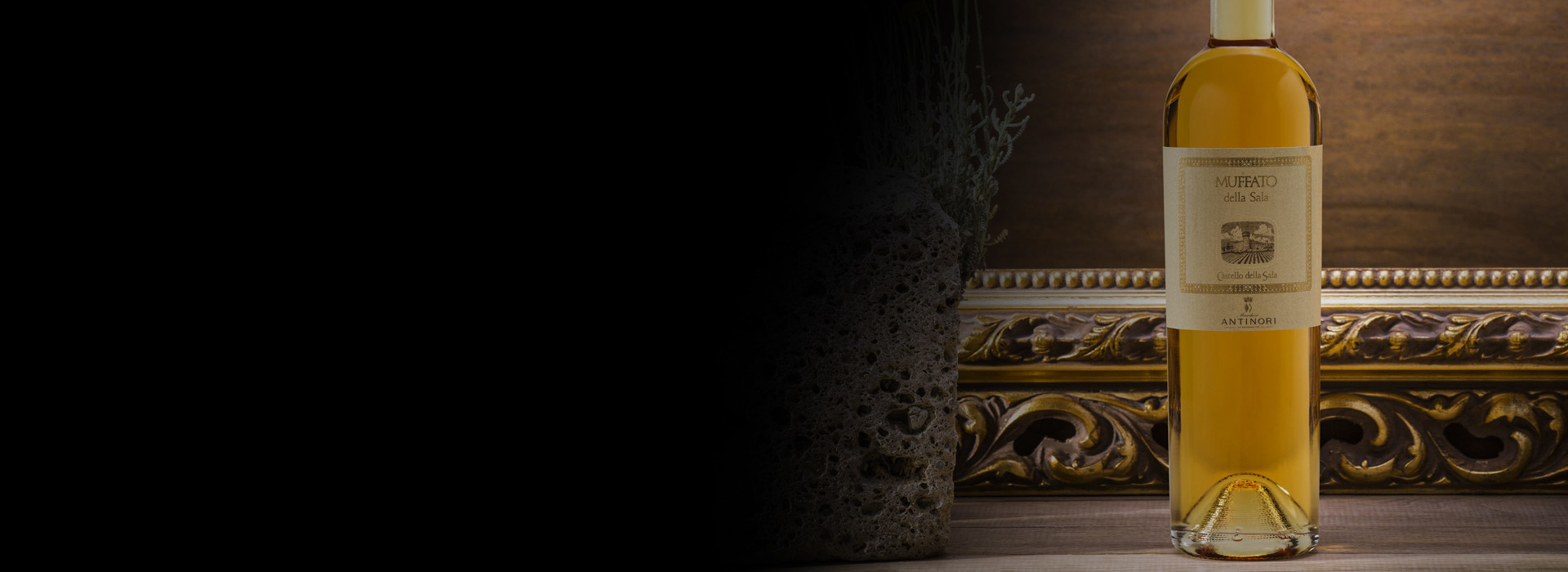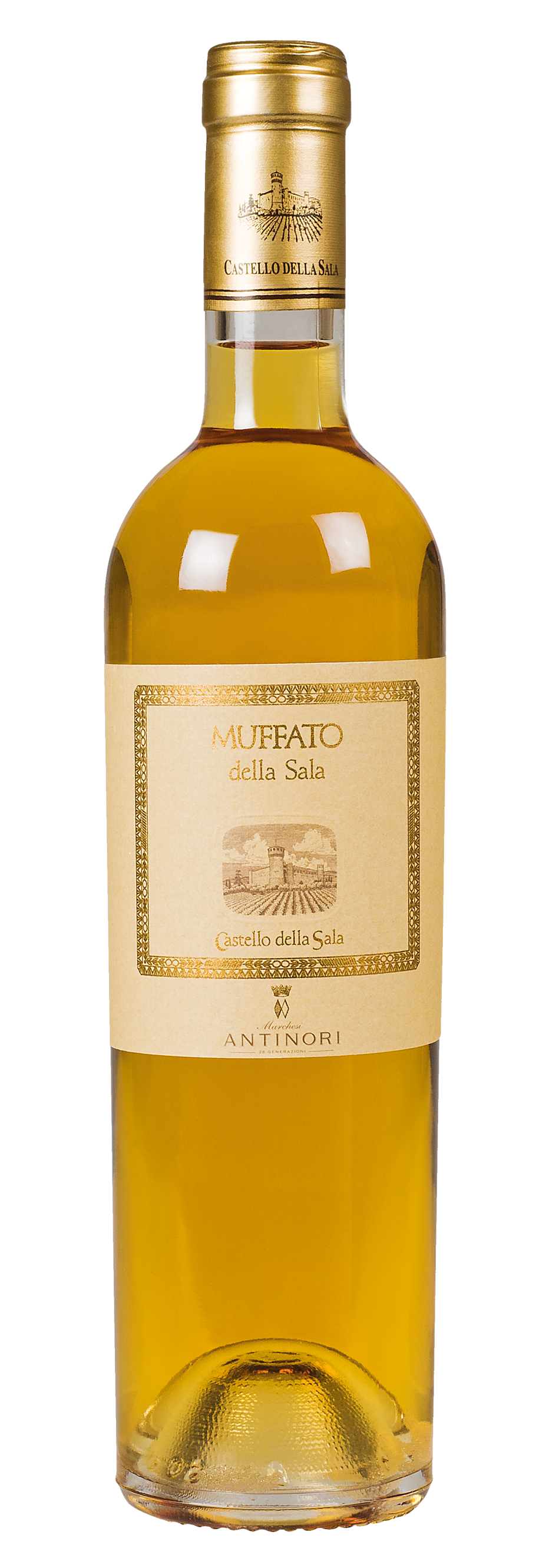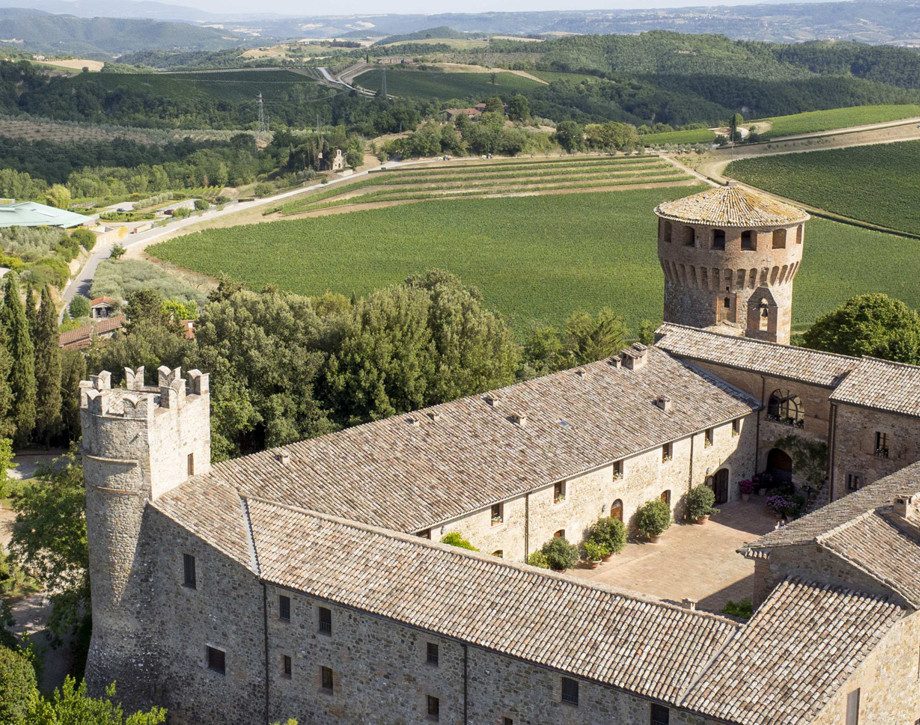Muffato della Sala

Climate
The winter was quite cold, particularly the minimum temperatures, while the mild, well-balanced spring weather allowed good foliage development. This year, like the last three years, this phenological phase was slightly delayed. Subsequently the temperatures remained balanced and reflected the seasonal average, enabling flowering and fruit-setting to take place normally. The months of July and August were hot without particular peaks, so the grapes ripened gradually and evenly. Average rainfall made it possible for the vines to survive the summer without stress. During September and October occasional rain alternating with sunshine caused the onset of “noble rot” gradually and without compromising the health of the fruit. Harvesting began on 9th October with the Traminer, and continued with the Riesling and Sauvignon to conclude in the first ten days of November with the Grechetto.
Vinification
The grapes were grown in the Castello della Sala vineyards at 200-350 metres a.s.l. on clayey land rich in marine fossils. The grapes were picked by hand, returning to the same vineyard more than once according to the onset of Botrytis Cinerea. The grapes were taken to the cellar for further selection on a belt, followed by soft crushing without destemming. After crushing the must fermented for 18 days at a temperature of about 17°C. The sweet wine obtained was placed in French oak barriques (Alliers and Tronçais) where it remained for about 6 months before blending and bottling.
Historical Data
Muffato della Sala is produced with grapes with “noble rot”, harvested in late October and early November to allow the morning mists to develop of Botrytis Cinerea, or noble rot on the grape berries. This type of mould concentrates the water of the crop, its sugars, and its aromas, endowing the Muffato della Sala with a harmonious and unmistakable fragrance. The first year to be produced was the 1987 and consisted of the blend of varieties such as Sauvignon Blanc (50%); Grechetto (30%) and Drupeggio (20%). The composition of the blend has varied over the years and now has attained its definitive results. Muffato della Sala is a fascinating wine, an expression, in small quantities, of the nature of a unique terroir.
Tasting Notes
Golden yellow colour. Very vibrant aromas and flavours with hints of candied fruit, honey and citrus fruit. Excellent balance of acidity and sugar.

The Wine
This fascinating wine is a blend of Sauvignon Blanc, Grechetto, Traminer, Sémillon and Riesling affected by Botrytis Cinerea (noble rot). The morning mists and local microclimate favour the development of this rot which reduces the water content of the grapes. The resulting concentration of sugars and aromas give the Muffato its special and unmistakeable flavour.

Climate
The winter was quite cold, particularly the minimum temperatures, while the mild, well-balanced spring weather allowed good foliage development. This year, like the last three years, this phenological phase was slightly delayed. Subsequently the temperatures remained balanced and reflected the seasonal average, enabling flowering and fruit-setting to take place normally. The months of July and August were hot without particular peaks, so the grapes ripened gradually and evenly. Average rainfall made it possible for the vines to survive the summer without stress. During September and October occasional rain alternating with sunshine caused the onset of “noble rot” gradually and without compromising the health of the fruit. Harvesting began on 9th October with the Traminer, and continued with the Riesling and Sauvignon to conclude in the first ten days of November with the Grechetto.
Vinification
The grapes were grown in the Castello della Sala vineyards at 200-350 metres a.s.l. on clayey land rich in marine fossils. The grapes were picked by hand, returning to the same vineyard more than once according to the onset of Botrytis Cinerea. The grapes were taken to the cellar for further selection on a belt, followed by soft crushing without destemming. After crushing the must fermented for 18 days at a temperature of about 17°C. The sweet wine obtained was placed in French oak barriques (Alliers and Tronçais) where it remained for about 6 months before blending and bottling.
Historical Data
Muffato della Sala is produced with grapes with “noble rot”, harvested in late October and early November to allow the morning mists to develop of Botrytis Cinerea, or noble rot on the grape berries. This type of mould concentrates the water of the crop, its sugars, and its aromas, endowing the Muffato della Sala with a harmonious and unmistakable fragrance. The first year to be produced was the 1987 and consisted of the blend of varieties such as Sauvignon Blanc (50%); Grechetto (30%) and Drupeggio (20%). The composition of the blend has varied over the years and now has attained its definitive results. Muffato della Sala is a fascinating wine, an expression, in small quantities, of the nature of a unique terroir.
Tasting Notes
Golden yellow colour. Very vibrant aromas and flavours with hints of candied fruit, honey and citrus fruit. Excellent balance of acidity and sugar.

Castello della Sala
Castello della Sala is located in the Umbria region, not far from the Tuscan border, about 18 kilometers from the historic city of Orvieto. The Medieval castle’s property extends over an area of 600 hectares (1482 acres), 200 hectares (495 acres) are planted with vineyards at an altitude that varies between 220 and 470 meters above sea level (722/1541 feet) on the gently rolling hillsides that characterize the beautiful countryside in this area. Castello della Sala is the perfect place for growing white varieties. The vines grow in clay and calcareous based soils, rich in fossil shells, and they are well exposed to the rising of the sun with an excellent difference of temperature between day and night. The one exception to the rule is Pinot Noir, the only red variety that has found in this area ideal growing conditions to best express its full potential.

Soil
Clay soils rich in deposits of marine fossils.
















